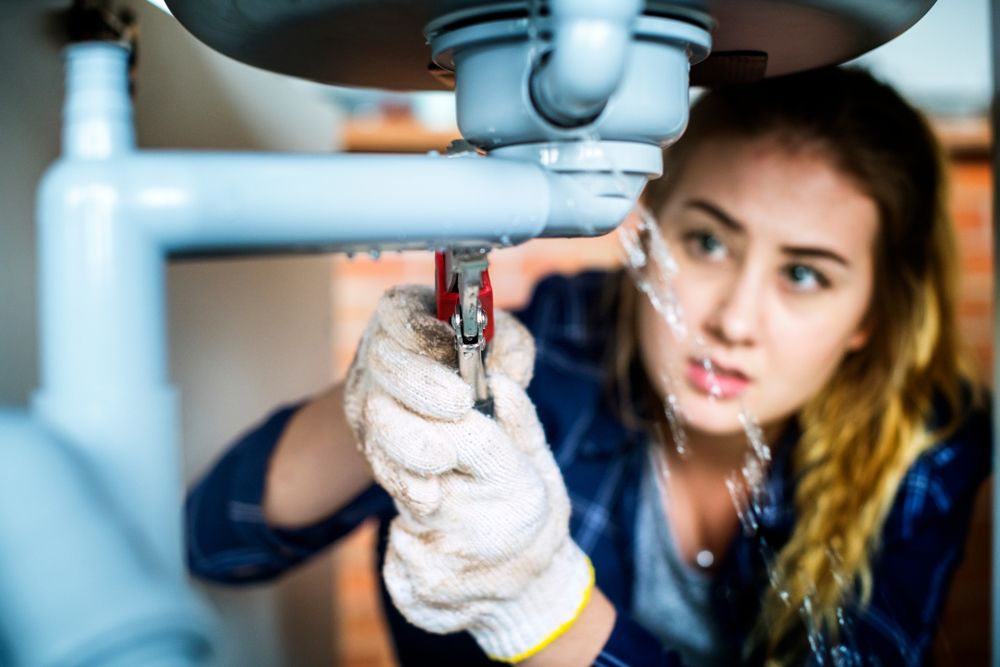Homeownership comes with plenty of responsibilities—and when something breaks, it’s tempting to call a professional right away. But not all repairs require a handyman. In fact, many common household issues can be fixed quickly and affordably with just a few basic tools and a bit of know-how.
Tackling these simple fixes yourself can save time, money, and the hassle of scheduling appointments. Whether you’re new to DIY projects or just looking for cost-effective solutions, here are some easy home repairs you can confidently handle on your own.
1. Fix a Leaky Faucet
That constant drip-drip-drip isn’t just annoying—it’s wasteful. A leaky faucet is often caused by a worn-out washer or O-ring inside the handle.
To fix it:
-
Turn off the water supply to the sink.
-
Use a wrench to remove the handle and access the inner cartridge or washer.
-
Replace the damaged washer with a matching one.
-
Reassemble the faucet and turn the water back on.
This simple repair can typically be done in under an hour and doesn’t require any specialized plumbing skills.
2. Patch Small Holes in Drywall
Whether it's from picture hooks, nails, or furniture dings, minor wall damage is easy to fix. All you need is some spackle, a putty knife, and a bit of sandpaper.
Steps:
-
Clean the area around the hole.
-
Apply spackle using the putty knife, smoothing it until it’s flush with the wall.
-
Let it dry completely.
-
Sand the area gently, then paint over the patch to match your wall.
This repair is perfect for preparing walls before repainting or refreshing a room.
3. Silence a Squeaky Door Hinge
A squeaky door is one of those small annoyances that’s easy to live with—but even easier to fix.
How to do it:
-
Open the door and apply a lubricant like WD-40 or even cooking oil to the hinge.
-
Move the door back and forth to work the lubricant in.
-
Wipe away any excess oil to prevent drips or residue.
If the squeak persists, remove the hinge pin and apply lubricant directly before reinserting it.
4. Unclog a Slow Drain
Before reaching for harsh chemicals or calling a plumber, try a simple manual fix for slow drains in sinks or tubs.
Try this method:
-
Remove the drain cover.
-
Use a plastic drain snake or wire hanger to pull out hair and debris.
-
Flush the drain with hot water.
A mix of baking soda and vinegar can also help break down buildup naturally. Regular maintenance like this can prevent more serious plumbing issues later on.
5. Replace a Broken Light Switch
If a light switch stops working, it’s often a sign of a worn-out or faulty component. Replacing a standard light switch is a straightforward electrical repair you can do safely if you follow proper precautions.
Steps:
-
Turn off power at the breaker box.
-
Remove the switch plate and unscrew the switch.
-
Disconnect the wires and attach them to the new switch in the same configuration.
-
Reinstall the plate and turn the power back on.
Make sure to double-check that the power is off before beginning, and always use insulated tools when working with electrical components.
6. Reseal a Bathtub or Shower
Over time, the caulk around your bathtub or shower can crack or peel, allowing moisture to seep into the walls. Recaulking not only looks better but helps prevent mold and water damage.
How to reseal:
-
Remove old caulk using a utility knife or caulk remover tool.
-
Clean the surface thoroughly and let it dry.
-
Apply a fresh bead of waterproof silicone caulk along the edges.
-
Smooth it with a damp finger or caulk tool and allow it to cure fully.
With a little patience, this simple task can make your bathroom look cleaner and feel more secure.
7. Repair a Running Toilet
A toilet that runs constantly can waste gallons of water every day. Luckily, the fix is often quick and inexpensive.
Here’s what to do:
-
Remove the toilet tank lid and inspect the flapper valve.
-
If the flapper is warped or doesn’t seal properly, replace it.
-
Adjust the chain or float as needed to ensure proper flushing and refilling.
Most home improvement stores sell toilet repair kits that include all necessary parts and instructions.
8. Reattach Loose Cabinet Doors
Cabinet doors can start to sag or feel loose with frequent use. Rather than replacing the whole hinge, a simple tightening or repositioning often does the trick.
Try this:
-
Open the cabinet and use a screwdriver to tighten the screws on the hinge.
-
If the screws are stripped, remove them and fill the holes with toothpicks dipped in wood glue.
-
Let it dry, then reinsert the screws.
This method gives the screw a more secure grip and extends the life of your cabinetry.
9. Replace a Door Stop
If a door swings into a wall, you could end up with scuffs or even holes in the drywall. Replacing a broken or missing door stop is an easy five-minute fix.
Steps:
-
Unscrew the old door stop from the baseboard or wall.
-
Install the new stop using the existing hole or a wall anchor if needed.
-
Check that it stops the door at the right point.
You can choose from spring-style, hinge-mounted, or bumper-style door stops depending on your preference.
10. Lubricate Sticky Windows
Windows that stick or are hard to open often just need a little lubrication.
Here’s how:
-
Clean the tracks thoroughly with a vacuum or cloth.
-
Apply a dry silicone spray or candle wax to the tracks.
-
Open and close the window several times to distribute the lubricant.
This quick fix improves airflow, safety, and ease of use.





